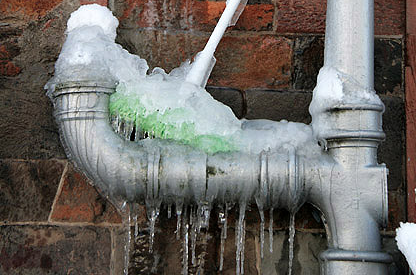Safeguarding Your Pipes from Cold Weather Damage: Key Approaches
Safeguarding Your Pipes from Cold Weather Damage: Key Approaches
Blog Article
On this page further down you can locate some worthwhile guidance in regards to How to Prevent Your Pipes From Freezing.

Winter can ruin your pipes, especially by freezing pipelines. Below's exactly how to avoid it from occurring and what to do if it does.
Intro
As temperature levels decrease, the threat of icy pipelines rises, potentially resulting in pricey repair services and water damages. Comprehending just how to avoid icy pipelines is important for home owners in chilly climates.
Understanding Icy Pipelines
What triggers pipes to ice up?
Pipelines ice up when revealed to temperature levels listed below 32 ° F (0 ° C) for extended periods. As water inside the pipelines ices up, it increases, taxing the pipeline wall surfaces and possibly creating them to break.
Threats and problems
Icy pipes can cause water disturbances, residential or commercial property damage, and pricey repairs. Ruptured pipes can flood homes and cause extensive architectural damage.
Signs of Frozen Piping
Identifying frozen pipes early can stop them from breaking.
How to determine frozen pipes
Look for reduced water flow from faucets, unusual odors or sounds from pipes, and visible frost on exposed pipes.
Prevention Tips
Protecting susceptible pipes
Wrap pipelines in insulation sleeves or use warmth tape to secure them from freezing temperature levels. Focus on pipelines in unheated or external locations of the home.
Heating methods
Keep indoor areas properly heated up, especially locations with pipes. Open closet doors to allow cozy air to circulate around pipes under sinks.
Shielding Outside Plumbing
Garden pipes and outdoor faucets
Detach and drain yard hoses prior to winter season. Mount frost-proof faucets or cover exterior taps with protected caps.
What to Do If Your Pipes Freeze
Immediate actions to take
If you believe icy pipes, maintain taps available to eliminate pressure as the ice thaws. Use a hairdryer or towels taken in warm water to thaw pipes gradually.
Long-Term Solutions
Architectural adjustments
Think about rerouting pipes away from exterior wall surfaces or unheated areas. Add extra insulation to attics, basements, and crawl spaces.
Updating insulation
Buy top notch insulation for pipelines, attics, and walls. Appropriate insulation assists maintain consistent temperatures and decreases the danger of icy pipelines.
Verdict
Protecting against frozen pipes needs aggressive actions and fast feedbacks. By recognizing the causes, indicators, and safety nets, home owners can protect their pipes during cold weather.
6 Proven Ways to Prevent Frozen Pipes and Protect Your Home
Disconnect and Drain Garden Hoses
Before winter arrives, start by disconnecting your garden hoses and draining any remaining water. Close the shut-off valves that supply outdoor hose bibs and leave the outdoor faucet open to allow any residual water to drain. For extra protection, consider using faucet covers throughout the colder months. It’s also important to drain water from any sprinkler supply lines following the manufacturer’s directions.
Insulate Exposed Pipes
Insulating your pipes is an effective way to prevent freezing. Pipe insulation is readily available at home improvement stores and is relatively inexpensive. Pay close attention to pipes in unheated areas such as the attic, basement, crawl spaces, or garage. Apply foam insulation generously to create a buffer against the cold. You can also wrap your pipes in heat tape or thermostat-controlled heat cables for added warmth.
Seal Air Leaks
Inspect your home for any cracks or openings that could let in cold air. Seal any holes around the piping in interior or exterior walls, as well as the sill plates where your home rests on its foundation. Additionally, make sure to keep your garage door closed unless you’re entering or exiting. Leaving it open creates a significant air leak that can lead to frozen pipes.
Allow Warm Air Circulation
During cold snaps, it’s essential to allow warm air to circulate evenly throughout your home. Leave interior doors ajar to promote better airflow. Open kitchen and bathroom cabinets to help distribute heat consistently around the rooms. If you have small children or pets, be sure to remove any household chemicals or potentially harmful cleaners from open cabinets for safety.
Let Faucets Drip
A small trickle of water can make a big difference in preventing ice formation inside your pipes. When temperatures drop significantly, start a drip of water from all faucets served by exposed pipes. This continuous flow helps prevent the water from freezing. Additionally, running a few faucets slightly can relieve pressure inside the pipes, reducing the chances of a rupture if the water inside does freeze.
https://choateshvac.com/6-proven-ways-to-prevent-frozen-pipes-and-protect-your-home/

Do you like reading up on 6 Ways to Prevent Frozen Pipes? Place a short review below. We would be pleased to find out your views about this article. We hope to see you back again before long. Don't hesitate to take a moment to share this blog if you appreciated it. Thanks for taking the time to read it.
Visit Homepage Report this page